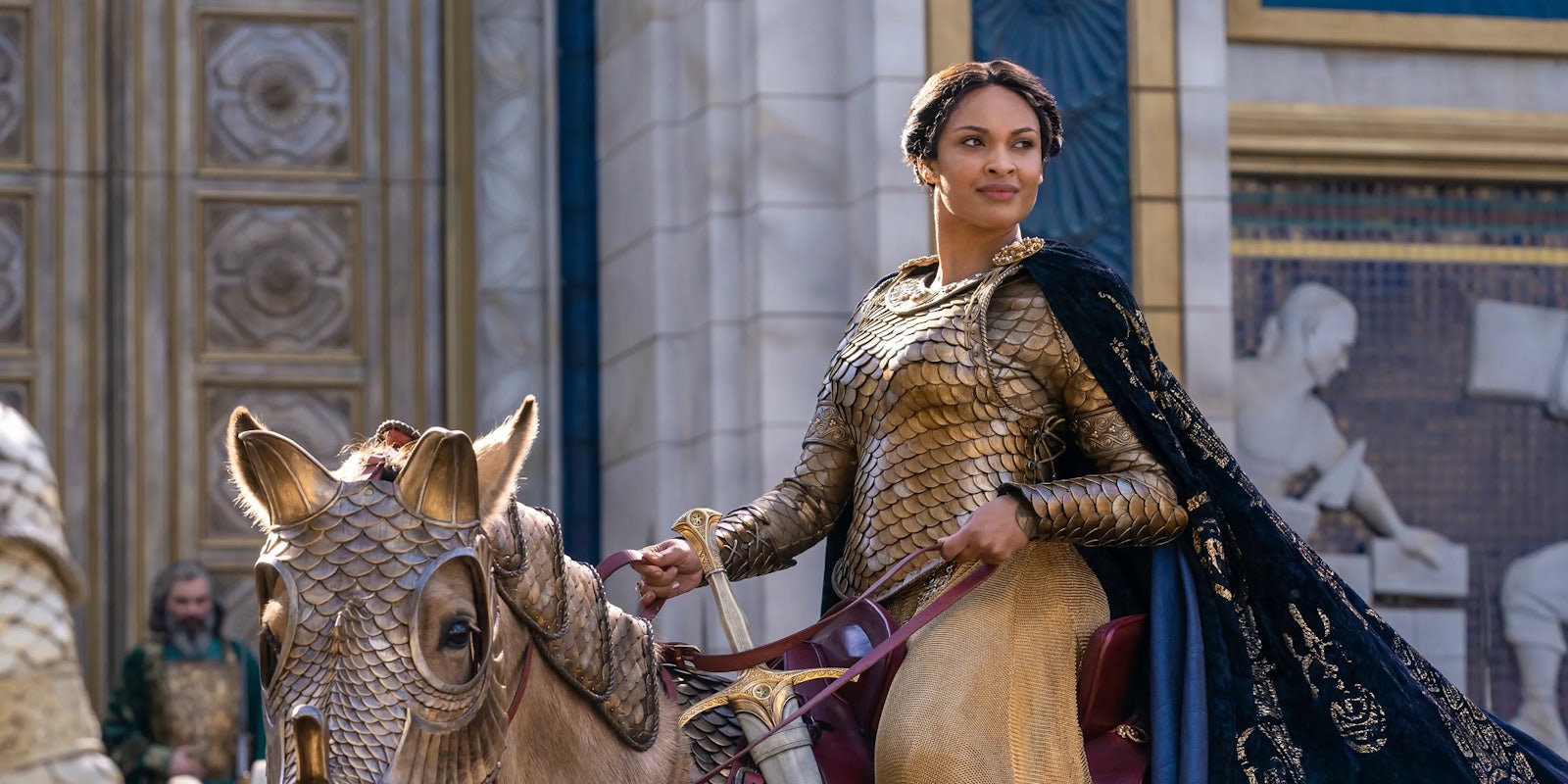Streaming services like Netflix and Amazon rarely reveal specific rating data for their own shows and movies. This week though, The Hollywood Reporter published some behind-the-scenes insight into the viewership of certain Amazon releases—and the flagship Lord of the Rings spinoff The Rings of Power did not come out looking good.
Apparently, a mere 37% of US viewers watched season 1 through to the end, while overseas it reached a still-underwhelming 45%.
So-called completion rates are an important (yet divisive) metric when defining the success of a streaming show. At Netflix, they often play into cancellation decisions. For comparison, Netflix’s smash-hit Squid Game reportedly had an 87% completion rate and the popular Heartstopper achieved 73%. First Kill, which was controversially canceled, had an unimpressive completion rate of 44%.
If less than half the audience watches to the end, it’s considered a bad sign. But other factors were clearly at play for The Rings of Power, which has been renewed for a second season. Only two Amazon originals cracked the top 15 most-viewed streaming shows of 2022, in a list dominated by Netflix: The Boys at #11, and Rings of Power at #15. So technically, Rings of Power is one of Amazon’s most popular releases—even if it’s outstripped by Netflix shows like Virgin River, The Last Kingdom, and Inventing Anna.
This THR report highlighted some other troubling details about Amazon’s methods of judging its own content. For instance, focus-group feedback tends to prefer “broad” programming and penalize shows with queer leads, potentially contributing to the much-criticized cancellation of A League of Their Own. However, this Rings of Power revelation is the most damning in terms of sheer financial scale.
Amazon paid $250 million for the screen rights to The Rings of Power‘s source material, and the production budget brought that total up to an estimated $1 billion. It may well be the most expensive TV show ever made. But money doesn’t automatically translate to quality, and Rings of Power leaned heavily on production values while the story suffered from poor pacing and lack of depth.
Despite the massive popularity of Tolkien as a brand–and Amazon’s colossal marketing push—viewership for The Rings of Power dropped sharply after the high-profile premiere episodes, while House of the Dragon (its most obvious rival) gained viewers as the first season progressed.
These stats paint an awkward picture for The Rings of Power. While technically one of Amazon’s most-watched shows, its audience wasn’t necessarily impressed with what they saw. On the other hand, maybe season 2 will attract better results, following the tradition of TV shows that take a season or two to get going. If you cancel everything with a lackluster first season, you may miss out on later greatness.
Considering the budget and publicity for The Rings of Power, there’s a certain “too big to fail” element at play here. There’s also the question of what success actually looks like for a streaming show.
Viewership numbers are an obvious way to measure popularity, but subscription streaming content isn’t directly profitable in the same way as a traditional broadcast show with ad breaks. The Rings of Power has more ephemeral benefits for Amazon: Attracting new subscribers, reminding pre-existing Amazon Prime customers that the streaming service exists, and functioning as broader publicity for the Amazon brand. So while a 37% completion rate is a damning response to the show’s writing, it wasn’t considered a mark of out-and-out failure.



